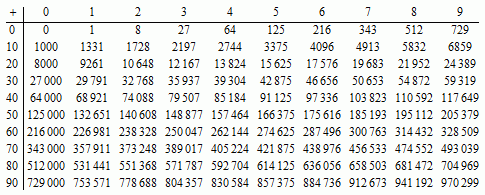An elliptic curve is a type of cubic equation, usually of the
form y^2 = x^3 + a x + b. Problems using cubic equations are
sufficiently hard that the NSA recommends them for Top Secret
messages, using a routine called Suite B.
For cubic numbers; 1, 8, 27, 64, 125, 216, 343, 512, 729, 1000, 1331,
1728...; around 250AD, Diophantus stated that for positive, rational numbers,
any sum of cubic numbers is also a difference of cubes. For example,
6^3 - 5^3 = 3^3 + 4^3. Fermat carefully studied a Latin translation
of Diophantus and made a margin note that became Fermat's Last Theorem.
The easy problem was made famous by Ramanujan, after his friend Hardy
visited him. Hardy: "I thought the number of my taxicab was xxxx. It seemed to me rather a dull number."
To which Ramanujan replied: "No, Hardy! No, Hardy! It is a very interesting number. It is the smallest number expressible as the sum of two cubes in two different ways."
In 1836, Lenhart solved the "Too hard" problem with 4 22-digit numbers. In 1902, Escott found the set (-6052, -1948, 6044, xxxx). There is one solution with smaller
numbers, and many with larger numbers, for example (-10140701, 11508332, 56408980, 85827668). Find the smallest solution.
